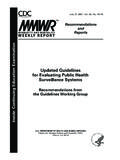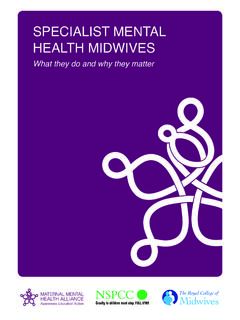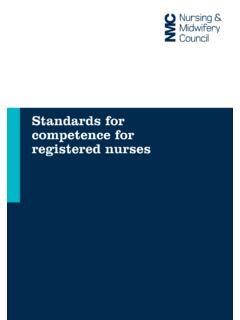Transcription of Framework for commissioning community nursing
1 Framework for commissioning community nursing OFFICIAL 2 OFFICIAL 3 Framework for commissioning community nursing Version number: First published: October 2015 Prepared by: Kathryn Evans, community nurse Advisor, NHS England, with advice from the community Workforce Expert Reference Group (Appendix 1). Classification: OFFICIAL The NHS commissioning Board (NHS CB) was established on 1 October 2012 as an executive non-departmental public body. Since 1 April 2013, the NHS commissioning Board has used the name NHS England for operational purposes.
2 NHS England s purpose is to create the culture and conditions for health and care services and staff to deliver the highest standard of care. To ensure that valuable public resources are used effectively to get the best outcomes for individuals, communities and society for now and for future generations. When this Framework is implemented locally, commissioners and providers should pay due regard to the public Sector Equality Duty (section 149 of the Equality Act 2010) and to the need to reduce inequalities between patients in access to health services and the outcomes achieved ( health and Social Care Act 2012).
3 Service design should be appropriate and accessible to meet the needs of diverse communities. Guidance for NHS commissioners on Equality and health Inequalities legal duties can be accessed at OFFICIAL 4 Contents Contents .. 4 1 Introduction .. 5 2 Purpose .. 6 3 Current context .. 6 4 Key characteristics of community nursing .. 7 5 Key factors affecting delivery of community nursing services .. 9 Diagram 1 - Factors affecting community nursing services delivery .. 9 6 The eight components for commissioning community nursing .
4 10 Diagram 2- Components for community nurse commissioning .. 10 Component 1: Focused on health needs - now and the future .. 11 Component 2: Person centred outcome based commissioning .. 12 Component 3: Behaviour change and self-care .. 14 Component 4: Leadership and governance .. 15 Component 5: Quality .. 16 Component 6: People and culture .. 17 Component 7: Technology .. 18 Component 8: Effective workload management .. 19 7 Workforce planning tools .. 22 Diagram 3 - Matrix of tools and focus .. 23 8 Next steps .. 24 9 References.
5 25 10 Useful resources .. 27 11 Appendix 1 - community Workforce Expert Reference Group Members .. 29 12 Additional consultation respondents .. 30 OFFICIAL 5 1 Introduction This Framework has been developed as part of the Transforming nursing for community and Primary Care Programme (TNfCPC), the Senior Responsible Officer for the programme is Jane Cummings, Chief nursing Officer England. The Framework supports commissioning of community nursing in response to the Five Year Forward View. It focuses on community nursing whilst recognising that greater integration for health and social care will be needed to meet future needs.
6 community nursing1 refers to a diverse range of nurses and support workers who work in the community , including district nurses, intermediate care nurses, community matrons and hospital at home nurses. It does not specifically include general practice nurses, community mental health , learning disability or children s nurses although is transferable and all are central to integrated working. The Five Year Forward View (1)2 outlines the challenges faced by the health and social care system in response to an ageing population with increasingly complex and multifaceted health and wellbeing issues.
7 Delivering the strategic vision of the Five Year Forward View requires a joined up approach for effective commissioning and delivery of community nursing services. Subject experts and partner organisations (Appendix 1) have contributed to the development of this Framework for commissioning community nursing within the current health and social care context. They have identified the key characteristics of a community nursing workforce and the main challenges for community nursing services. The Framework is based on these challenges and in response to the emerging new care models, part of the Five Year Forward View.
8 Formed of eight components the Framework will support commissioners and providers to understand the inter-relationships between the components important to commissioning community nursing . These components encompass assessing need, planning services, commissioning the service and reviewing the impact through outcomes. These components can also be adapted to the wider integrated health and social care system. The Framework provides an overview of community nursing workforce planning tools in advance of winter 2015. This is prior to the multi professional approach to the 1 When district nurse is used it refers specifically to district nurses not community nurses in general.
9 2 The Five Year Forward View was collaboratively produced by NHS England, health Education England, public health England, NHS Trust Development Agency (TDA), Monitor, and the Care Quality Commission. What is community nursing ? community nursing encompasses a diverse range of nurses and support workers who work in the community . This Framework focusses on community nurses providing care for the over 18 s encompassing the district nursing service, community matrons, intermediate care and specialist nurses as examples. OFFICIAL 6 development of guidance on safe staffing being undertaken by the Chief nursing Officer and NHS Improvement.
10 Guidance from the Queens nursing Institute (QNI) (2) and health Education England (HEE). (3) should be read in conjunction with this Framework to support community nursing commissioning . The QNI have developed Voluntary education standards for district nurse education and practice (2) providing further insight into the knowledge base and competencies required of service leaders working in a community setting. The standards will support this work to enable greater consistency in expectations of district nurses. HEE (3) will also publish an overarching education and career Framework for district and general practice nursing service at the end of October 2015.

















